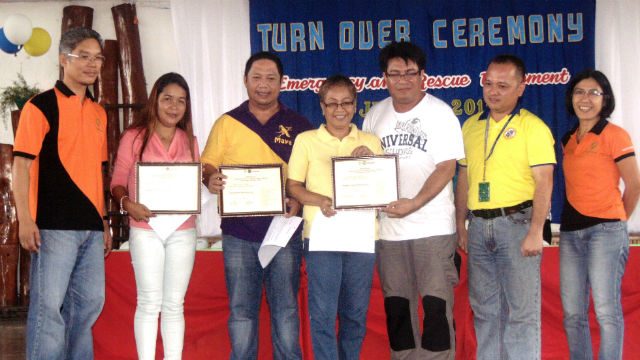SUMMARY
This is AI generated summarization, which may have errors. For context, always refer to the full article.

ILOILO City, Philippines – The Philippine Partnership for the Development of Human Resources in Rural Areas (PhilDHRRA) has completed its project in the 3 municipalities in Northern Cebu, namely: Tabogon, Medellin and Daan Bantayan.
The project intervention was intended to transform 9 barangays in the 3 municipalities into resilient communities following the aftermath of Typhoon Yolanda (Haiyan) which ravaged the Visayas in November 2013.
The project entitled “Building Resilience of Typhoon Haiyan-Affected Communities in Northern Cebu (BRTH NCebu)” was started in May 2014 with a total budget of P19.4 million. It was envisioned to attain the following:
- Strengthened capacities of barangay local government units and local community-based organizations in community disaster preparedness.
- Provided disaster-resilient or climate-adaptive livelihoods in 3 selected barangays; and
- Enhanced organizational capacities in project monitoring.
Luchie Blanco, project manager for BRTH NCEBU, explained that the project contained two major components – disaster risk reduction and management (DRRM) and development of sustainable sivelihood for resiliency (DSLR).
“Each of the component plays a significant role in creating resilient communities,” said Blanco.
The barangay communities covered by the project were the following:
- Salag, Somosa, and Maslog in the Municipality of Tabogon
- Kawait, Canhabagat, and Antipolo in the Municipality of Medellin
- Maya, Bitoon, and Paypay in the Municipality of Daan Bantayan.
Starting from the ‘purok’ level
The activities under the DRRM component comprised of capacity building ranging from raising awareness to formation of barangay disaster risk reduction and management council (BDRRMC). It also included strengthening of the BDRRMC and assistance on how the council can formulate contingency plans.
Moreover, the DRRM component also involved an emergency response program, a transparency and accountability mechanism, and a formation of small villages (or “purok” system) rescue team.
Equipment and facility support was also integrated in the implementation of the project, hence, its completion involved a procurement and turn-over of emergency and rescue equipment to the beneficiaries. There were around 17 different equipment which were turned over by PhilDHRRA to the beneficiaries.
On the DSLR component, the project covered strengthening and development of people’s organizations, livelihood support fund, transparency and accountability, and project management.
Of the two project components, PhilDHRRA invested P13-million for DRRM and P6.2-million for the DSLR.
The project was undertaken by PhilDHRRA in partnership with the local government units of Tabogon, Medellin and Daan Bantayan and with the funding support from Action Aid.
The Philippine Partnership for the Development of Human Resources in Rural Areas (PhilDHRRA) is a network of 65 non-government organizations involved in various development activities in rural communities all over the Philippines. – Rappler.com
Ted Aldwin Ong is a Rappler mover in Iloilo.
Add a comment
How does this make you feel?





There are no comments yet. Add your comment to start the conversation.